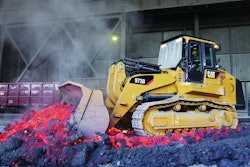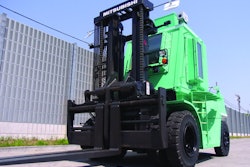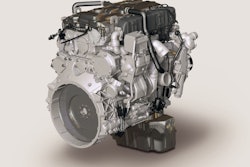Diesel engines – which power more than 95% of America’s commercial trucks and 85% of its buses – will play a central role of the United States’ new effort to reduce fuel consumption and lower greenhouse gas emissions (GHG) in the years ahead.
The final rules issued by the U.S. Environmental Protection Agency (EPA) and National Highway Traffic Safety Administration (NHTSA) establish a national program to reduce GHG emissions and establish new fuel efficiency standards for commercial trucks and buses beginning in 2014 through 2018.
“This landmark new rule envisions diesel power as the continued workhorse of freight transportation in the clean energy economy of tomorrow,” says Allen Schaeffer, the Executive Director of the Diesel Technology Forum. “The goals set out in these new regulations build on past progress in making diesel clean, and demand further gains in diesel engine efficiency.
“As the industry moves to meet these new standards, the diesel engine provides a strong foundation. Further improvements to the diesel engine will be made and combined with enhancements to other vehicle components to tackle this new chapter of regulations. Diesel also provides a unique technology platform suitable for expanded use of hybrid powertrains and lower-carbon renewable fuels - both strategies for reducing GHG emissions in the future.
“It Is Fitting That A Key Solution For Solving This Challenge Lies In The Diesel Engine.”
“The billions of dollars in research and development by engine and truck manufacturers over the last decade has paid off and led to the new technology diesel engines and fuels we know today. For all parties, the challenge of increasing fuel efficiency while maintaining or improving environmental, safety and productivity of commercial vehicles is as important as it is complex. These engines offer an unmatched combination of energy-efficiency, work capability, reliability and now near-zero emissions making them the technology of choice for commercial trucks today and into the foreseeable future.
U.S. Fleet of Trucks Consumes About 22 Billion Gallons of Diesel Fuel Every Year
“Because of the sheer magnitude of commercial vehicles operating in the United States, this regulation has the potential to result in significant environmental and energy efficiency gains,” Schaeffer says. “More than 95% of all heavy duty trucks are diesel-powered, as are a majority of medium duty trucks and buses.
“The U.S. fleet of trucks consumes about 22 billion gallons of diesel fuel every year. Over the lifetime of the vehicles affected by the new rule, the program is expected to reduce oil consumption by more than 500 million barrels, result in more than $50 billion in net benefits, and reduce carbon dioxide emissions by 250 million metric tons.
New 2011 Diesel Vehicles Deploy the Most State-Of-The-Art Engine & Emissions Control Systems
“Over the last 10 years, emissions from medium and heavy-duty diesel trucks and buses have been reduced by 99%. Today’s new 2011 medium and heavy-duty diesel truck or bus deploys the most state-of-the-art engine and emissions control systems and has near zero emissions; a significant accomplishment considering that increased fuel efficiency and lower emissions are near opposite and competing forces in diesel engine design. In fact, diesel vehicles manufactured after 2010 are experiencing an average 5% improvement in fuel efficiency, making them cleaner and more fuel efficient than ever before.”



















